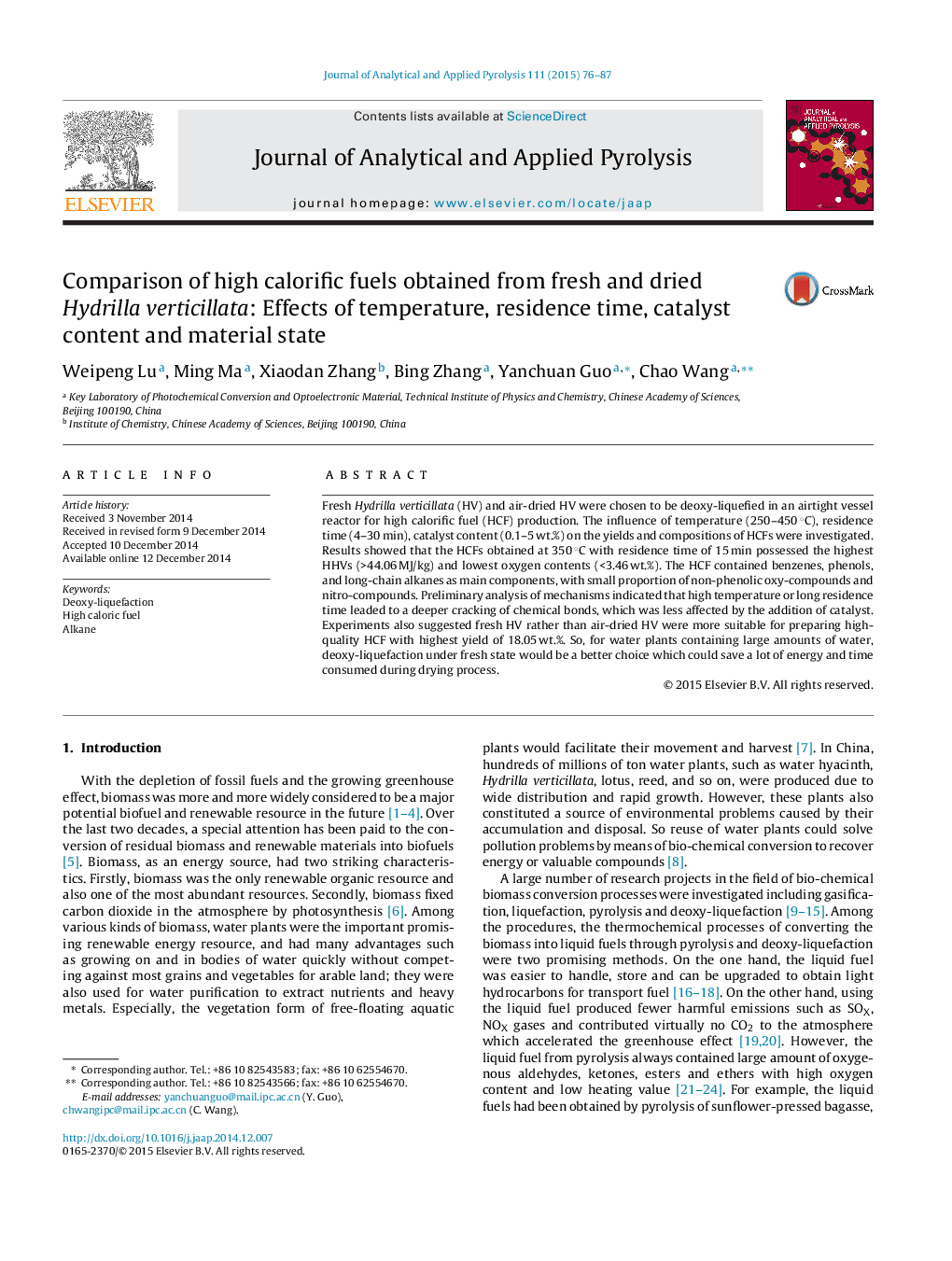| Article ID | Journal | Published Year | Pages | File Type |
|---|---|---|---|---|
| 1196705 | Journal of Analytical and Applied Pyrolysis | 2015 | 12 Pages |
•Fresh HV and dried HV were used for deoxy-liquefaction under different conditions.•Effect of temperature or residence time on yield and compositions of HCF was greater.•The fuels possessed high HHVs (>41.92 MJ/kg) and low oxygen contents (<4.63 wt.%).•Deoxy-liquefaction of fresh HV could save energy and time for water plants.
Fresh Hydrilla verticillata (HV) and air-dried HV were chosen to be deoxy-liquefied in an airtight vessel reactor for high calorific fuel (HCF) production. The influence of temperature (250–450 °C), residence time (4–30 min), catalyst content (0.1–5 wt.%) on the yields and compositions of HCFs were investigated. Results showed that the HCFs obtained at 350 °C with residence time of 15 min possessed the highest HHVs (>44.06 MJ/kg) and lowest oxygen contents (<3.46 wt.%). The HCF contained benzenes, phenols, and long-chain alkanes as main components, with small proportion of non-phenolic oxy-compounds and nitro-compounds. Preliminary analysis of mechanisms indicated that high temperature or long residence time leaded to a deeper cracking of chemical bonds, which was less affected by the addition of catalyst. Experiments also suggested fresh HV rather than air-dried HV were more suitable for preparing high-quality HCF with highest yield of 18.05 wt.%. So, for water plants containing large amounts of water, deoxy-liquefaction under fresh state would be a better choice which could save a lot of energy and time consumed during drying process.
